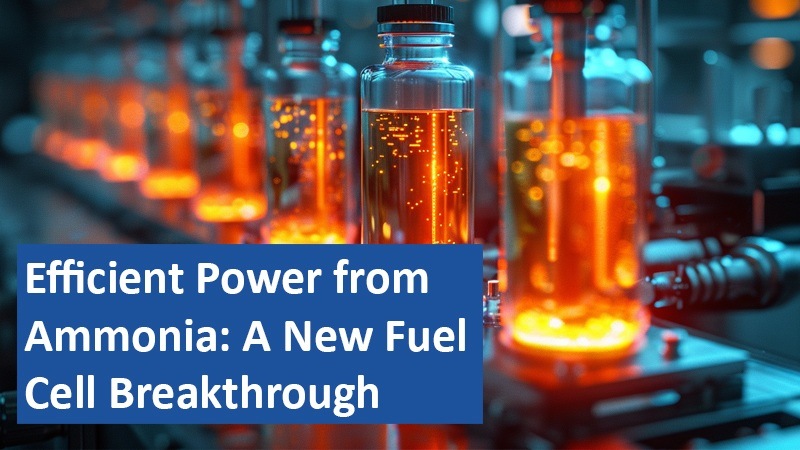A research team has developed an innovative fuel cell system that generates electricity directly from ammonia without requiring an external hydrogen conversion process. This integrated system combines a high-temperature fuel cell and an ammonia “cracker,” achieving an impressive 60% efficiency rate—comparable to the energy yield of natural gas. With this technology, ammonia could emerge as an efficient, compact alternative for hydrogen storage and energy generation.
By Sadie Watkins
Ammonia as a Compact Energy Carrier

Hydrogen is widely viewed as a clean energy solution due to its versatility: it can be burned for heat or used in fuel cells to generate electricity. However, hydrogen storage and transport present significant challenges, as the gas must be highly compressed or liquefied—an energy-intensive process. Ammonia (NH3) could solve these issues, acting as a compact hydrogen carrier since it liquefies at just -40°F and is easier to transport. Yet, converting ammonia back into usable hydrogen requires temperatures above 572°F, adding a layer of complexity and energy demand.
Combined Fuel Cell and Cracker Technology
Laura Nousch and her team at Germany’s Fraunhofer Institute for Ceramic Technologies and Systems (IKTS) have developed a solution to convert ammonia to power more efficiently. Their integrated system merges a high-temperature fuel cell with an ammonia cracker, eliminating the need for separate equipment. In this setup, the cracker first splits ammonia into nitrogen and hydrogen at temperatures over 572°F. The hydrogen then flows into the adjacent fuel cell, where it undergoes a reaction to produce electricity, while nitrogen is safely released back into the atmosphere.
Maximizing Efficiency Through Heat Recovery
This new fuel cell system leverages the heat generated during the reaction process to maximize efficiency. Excess hydrogen is typically burned with oxygen to produce water, creating additional heat. In this system, the excess heat is reused to maintain the cracker’s high temperature and is also captured as usable waste heat, potentially for building heating. This integrated heat loop raises the system’s overall efficiency to 60%, putting it on par with conventional natural gas-based power generation methods.
Applications for Industry, Municipalities, and Maritime Use
The compact design of this ammonia-powered fuel cell could be particularly beneficial for industrial facilities, municipalities, and large vessels like ships. These settings often lack space for bulky hydrogen storage but require robust energy solutions. With its high energy density and easier transport, ammonia may serve as an ideal energy source for both stationary and mobile applications. “Ammonia provides a stable, high-density form of hydrogen, making it a great candidate for clean power and heat generation,” Nousch noted, highlighting its potential for various climate-friendly applications.
This technology presents a promising alternative to fossil fuels, potentially transforming energy generation in industrial and maritime sectors.
Based on information from www.scinexx.de and own research.